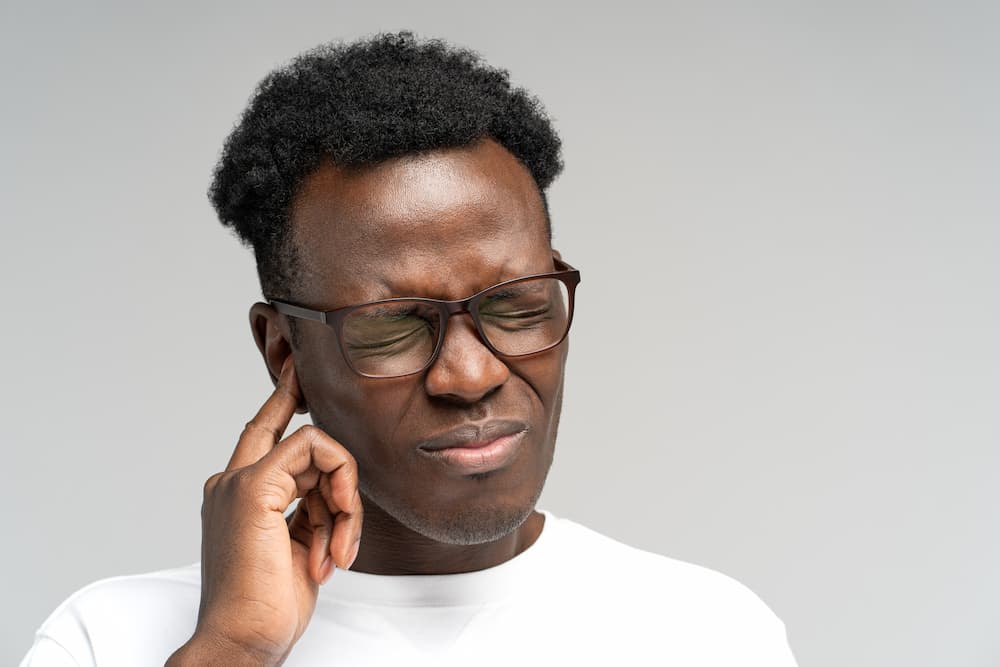Have you noticed a build up of dry ear wax in your ears? Ear wax plays an important role in keeping our ears healthy. Having too much wax may lead to impacted ears and uncomfortable symptoms.
Unfortunately, there are many popularised approaches to removing ear wax at home that can cause serious damage to your ears. As a general rule, you should seek medical advice if you suspect you have a build up of dry earwax.
What is the best way to remove ear wax safely?
Soft vs Dry Ear Wax
Earwax, medically referred to as cerumen, is produced in the outer third of the ear and is comprised of sebum, skin cells, sweat and dirt.
There are two variations of ear wax produced by humans – wet or dry earwax – and this depends primarily on your ethnicity. Dry, flaking earwax is typically very pale in colour and is commonly produced by East Asian populations. On the other hand, wet earwax is more common in those of European or African descent.
When it’s first formed, most ear wax will be softer in consistency. When it comes into contact with air, it becomes firmer, dryer and darkens in colour as it ages.
When to Remove Ear Wax
The ears have their very own self-cleaning mechanism that regulates the removal of ear wax. In some people, this mechanism may not work as well. It’s important to avoid over-cleaning the ear. If you find yourself regularly experiencing a dry, itchy sensation in your ear, it could be a result of insufficient ear wax due to over-cleaning.
On the other hand, if you find dry ear wax building up, this could be a sign that ear wax removal is required. Common symptoms of a blocked ear include pain, dizziness, itching, a blocked or full feeling, or a ringing in the ear. The discomfort of a blocked ear can be quite debilitating. See an Earworx professional for gentle, safe and effective earwax removal.
Don’ts
- Contrary to popular belief, cotton tips should be kept out of the ear canal. It is a common misconception that these instruments are designed for dry ear wax removal. While the intention is good, sticking any object into the ear can risk forcing the dry earwax deeper into the canal, worsening symptoms.
- Tweezers, pins or any small object, no matter how fine, should also be kept out of the ear. Insertion of any object into the ear canal should only be conducted by trained professionals.
- Ear candles, despite their claims, can be extremely dangerous to use. Placing the end of the candle into the ear can aggravate the sensitive ear canal entry and canal walls. More concerningly, is the risk of burns. Please do not attempt dry ear wax removal with ear candles.
- Splashing or pouring water in the ear is another popularised home remedy that can lead to a worsening of symptoms. Particularly with dry earwax, water can create a temporary gap in the wax build up, which it may become trapped in. This can create a feeling of pain, pressure and severe discomfort if not treated quickly.
Do’s
- The only home remedy we endorse is the use of softening drops to assist in the break down of hardened and dry earwax. These drops can be found over the counter at most chemists, and are extremely effective when used in conjunction with professional ear wax removal. These drops should not be used if you have a hole in your ear drum.
- Undisputedly, the best way to remove ear wax is through professional micro suction. At our Earworx clinics, our qualified practitioners are highly trained in the gentle and effective removal of excess cerumen.
The Micro Suction Process
Micro suction is a clinical ear wax removal process widely endorsed by ENT specialists. Earworx specialises in the procedure, which is both safe and gentle, only ever carried out by our skilled Registered Nurses. Binocular inspection and micro suction devices ensure the delicate components of the ear remain unharmed throughout the entire process.
If you’re looking for a reliable solution for dry ear wax removal, look no further than your local Earworx clinic. We have dedicated locations across Australia, so give us a call or head online to book your appointment today!





